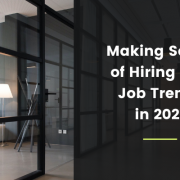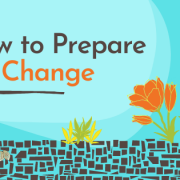Planned Happenstance: The Key to Your Career Success
Changing Careers There’s actually a wonderful career development theory by John Krumboltz (Stanford University) called Planned Happenstance. If you’ve never heard of it, don’t panic. Most of my colleagues haven’t either.
There’s actually a wonderful career development theory by John Krumboltz (Stanford University) called Planned Happenstance. If you’ve never heard of it, don’t panic. Most of my colleagues haven’t either.
If you’ve been reading my blog for a while, you know that I’ve often written about how luck, serendipity and curiosity play out in our careers – I’m so passionate about it that I created my first webinar “How to Attract Your Perfect Job” to give you a insider peek at how my clients have landed really cool and interesting jobs.
Planned happenstance is how, my friends, your career is likely to unfold. Seriously. The rate of change in the labor market is evolving so quickly that it’s estimated that 90% of the jobs that children in elementary school will have when they graduate from college don’t even exist today.
Taking advantage of happenstance – or serendipity, if you prefer this term — is how you’ll end up doing fantastic work that leaves you satisfied and fulfilled. Oh and where you’ll feel like your full potential is being utilized. Sounds tantalizing doesn’t it? On the one hand, “planned happenstance” – the role chance plays in our careers and how taking advantage of unplanned activities that come along – is a much more relaxed and easy-going approach. But on the other hand, it sounds a little airy fairy too, doesn’t it?
Don’t mistake the unplanned nature of today’s successful careers with a total lack of planning. It certainly doesn’t give you carte blanche to just sit back and let life happen. As a matter of fact, it means you have to be even more focused on taking action, adjusting plans and remaining flexible. As well as being optimistic, persistent, curious and taking more risks. Know this: It’s a delicate dance between planning and just letting things evolve.
Please, please, please, do not fall into this trap: Trying to figure out the whole plan before you do anything. I get it – because, frankly, that’s what smart people do. You devise and plan (or strategize or whatever you want to call it) and then you implement or execute the strategy. Chances are you even get paid to do that professionally, in some way or another.
“Know this: It’s a delicate dance between planning and just letting things evolve.”
So how can you make it different for 2014? Commit to doing something in 2014. Don’t worry about having worked out the plan or strategy. Then, take small actions that move you closer to what you want.
Here’s an example: Let’s say you’ve committed to updating your resume so you can start to look for new opportunities. Great. A logical plan might look like this:
Set a January 30th goal to have your resume ready to go. But by January 29th, you haven’t even looked at your resume, so you put off updating your resume until February 15th. But you have a big report come due at work in mid-February, so you get real with yourself and say by April 30th you’ll have your resume updated. Because, after all, you have to get your taxes done by the 15th of April. You’ve got it nailed now – good planning on your part. Might as well be realistic about the timing. April 30th comes and goes. You just haven’t found time to update your resume, therefore, you haven’t been able to look for a job. Can’t update your LinkedIn profile without an updated resume… can’t look for a job until you have resume done. Vicious. Cycle.
What does this scenario look like if you don’t get stuck on the planning piece? It looks a little more flexible and you’ll be focused on action, rather than planning. Can I tell you something, in confidence, of course? It’s not the resume that’s getting in the way of you finding a new job; it’s that you’re not taking ANY action towards attracting a new opportunity.
Instead of focusing on re-writing your resume, start with just finding your resume file. Then, two days after that, commit to reading through your old resume. At day three, update your contact information and add in your current work information such as title, company and dates. While doing this, you’re reminded of someone you used to work with whom you’ve lost touch, so you make a note to send them a message or call them. Day four, you reach out to that person to just reconnect. Day five, you set up an alert to get updates on an organization you’ve always been interested in.
After a week, you dig out your most recent performance evaluation and add a few accomplishments to your resume. See how it works? Baby steps. Just little nudges forward that keep you moving towards your commitment, but without having the whole darn process/plan defined beforehand.
If you’re ready to rock your career in 2014, you’ve got your game plan and it’s called Planned Happenstance. Tell me how it goes, will you?



